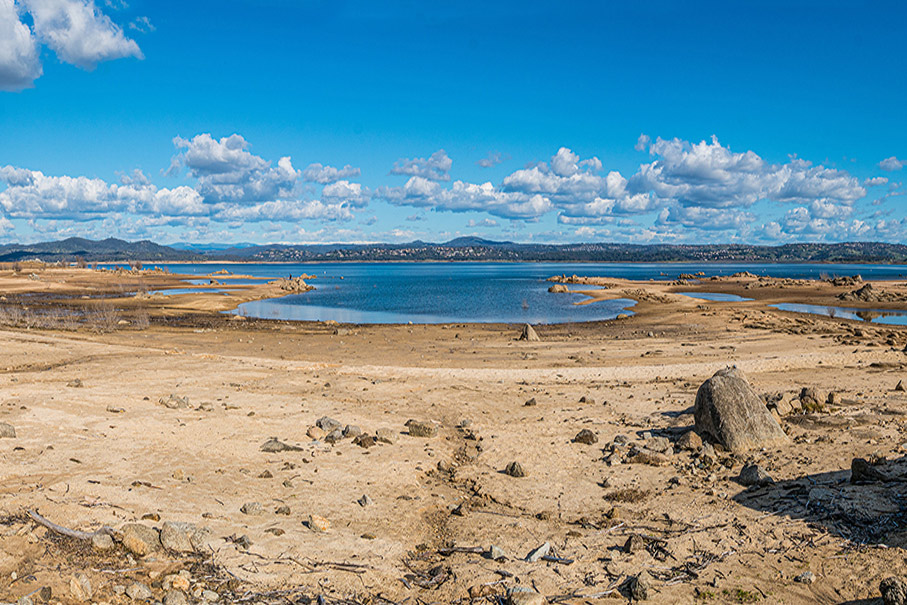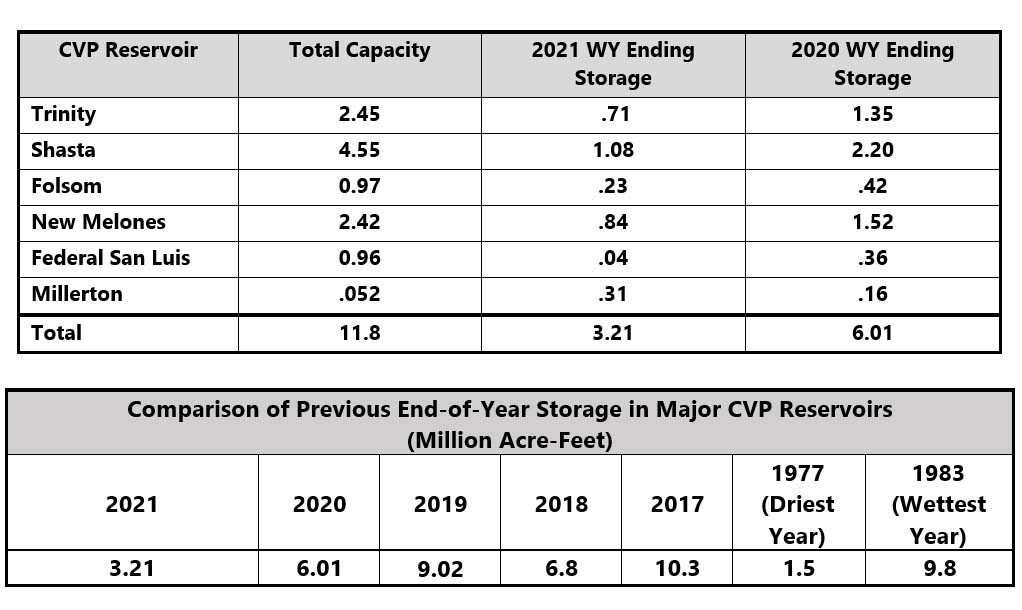
View of Folsom Lake in 2018
USBR file photo
October 14, 2021 - SACRAMENTO, Calif. - As severe drought conditions continue, the Bureau of Reclamation’s Central Valley Project began the 2022 water year with 3.21 million acre-feet of water—one of the lowest starting points in recent years. CVP major reservoirs include: Trinity, Shasta, Folsom, New Melones, Millerton, and the federal share of San Luis Reservoir—approximately 52% of a 15-year average. The water year begins Oct. 1 each year and ends Sept. 30.
“After a dry 2020 water year, a critically dry 2021, and beginning the 2022 water year with one of the lowest carryover storage amounts in recent years, Reclamation remains all hands on deck and fully committed to planning for another dry year,” said Regional Director Ernest Conant. “We will continue to collaborate with our water users, stakeholders, and agency partners to develop and implement proactive measures and creative solutions to get through the coming water year together and best manage our critical water resources.”
Water years 2020 and 2021 are the second driest two-year period on record, behind 1976-1977. Although the Sacramento and San Joaquin valleys received well-below average rainfall, the snowpack in March 2021 indicated that sufficient reservoir inflow was likely available to meet CVP requirements. Conditions significantly changed at the end of April 2021, however, when reservoir inflow from snowmelt was significantly less than expected. Inflow to Shasta Reservoir, California’s largest reservoir, was the lowest on record during the 2021 water year.
The table below shows reservoir capacities and end-of-year storage amounts for water years 2020 and 2021 for major CVP reservoirs. The following table compares end-of-year storages from water year 2017 to 2021. The amount of stored water at the end of the water year reflects the amount carried over into the new water year. One acre-foot is the volume of water sufficient to cover an acre of land to a depth of one foot.

The CVP is the largest single source of irrigation water in California, typically supplying water to about 3 million acres of agricultural land in the San Joaquin and Sacramento valleys. The CVP also provides urban water for millions of people and industrial water essential to the San Francisco Bay Area’s economy. Water from the CVP is also essential for the environment, wildlife and fishery restoration, and hydroelectric power production.
During the 2021 water year, CVP powerplants generated about 2.9 billion kilowatt-hours; well below an average year, which is about 4.5 billion kilowatt-hours. Project use is anticipated to have consumed about 20 percent of this energy; the remaining energy was made available to public agency contractors serve by the Western Area Power Administration.
Reclamation continues to work with federal and state partner agencies and CVP water and power customers to prepare for potentially ongoing drought conditions. Another consecutive dry water year would present extreme operational challenges for the CVP.
For additional storage information, visit www.usbr.gov/mp/cvo; for additional information on the 2021 water year, visit www.usbr.gov/mp/drought.
CVP storage information
Source: Bureau of Reclamation








